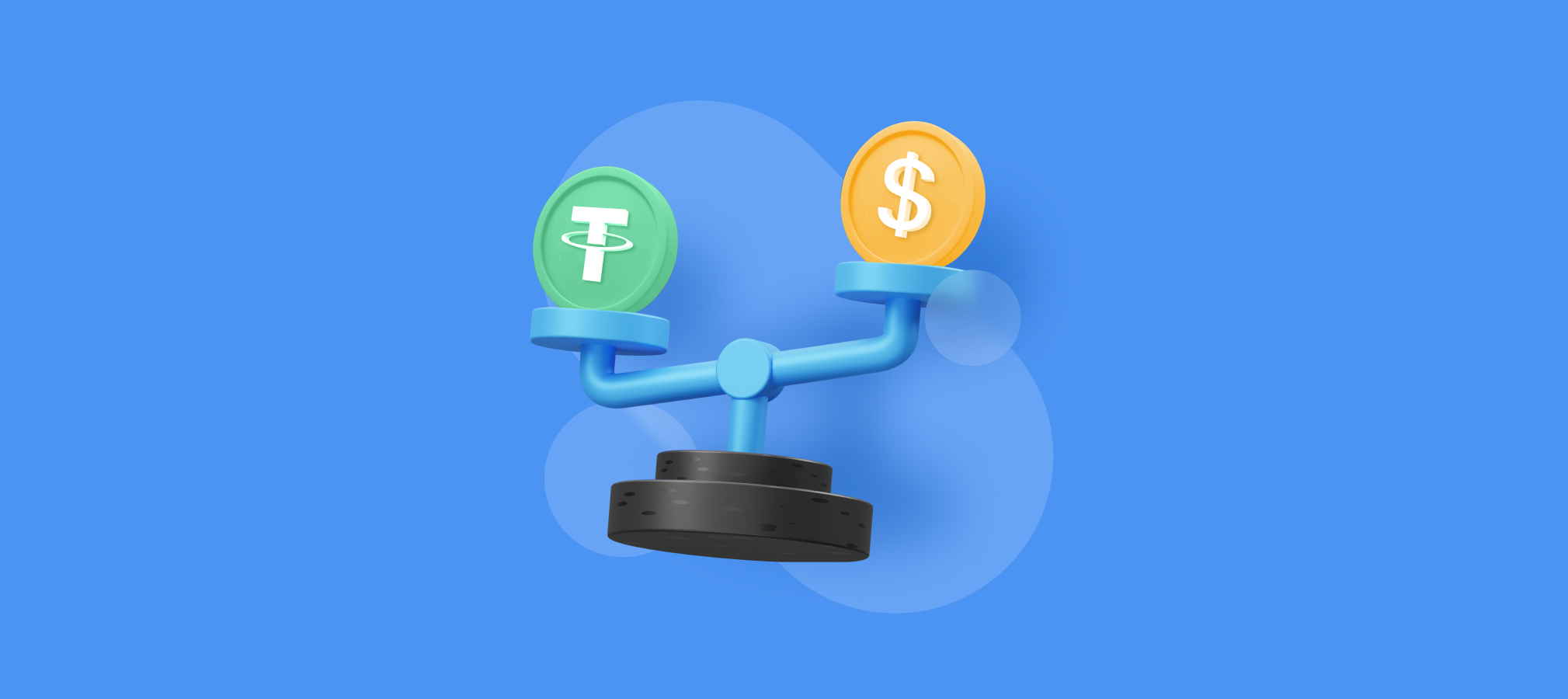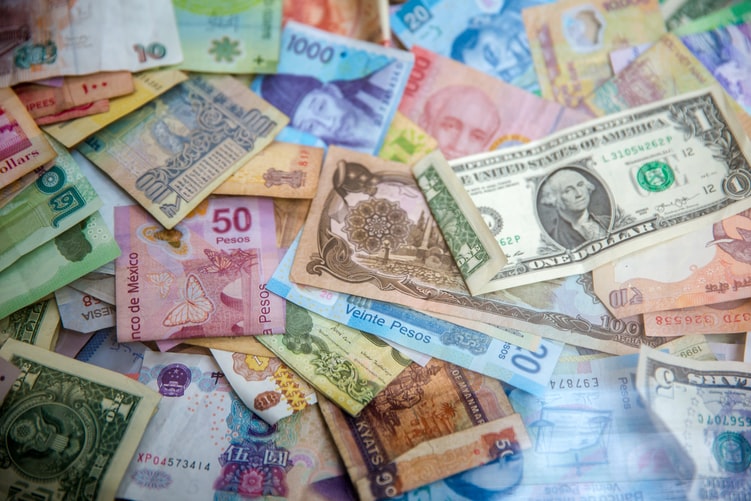Stablecoins Guide | Everything You Need To Know About Stablecoins

This blog post will cover:
- What are stablecoins?
- Why was it needed?
- What types of stablecoins are there?
What are stablecoins?
Stablecoin is a type of cryptocurrency that provides price stability and is backed by some reserve assets, e.g., U.S. dollar or gold. This makes it more stable to constant market fluctuations. The idea of the stablecoin emerged in 2012 in the Mastercoin documentation. However, it came in handy only in 2015 when Tether Limited launched the very first stablecoin.
Why was it needed?
High volatility makes cryptocurrencies hard (or even impossible) to use on a daily basis. When a chance of high inflation is excluded, it is possible for the public to use stablecoins. The stablecoin has an opportunity to become a reserve currency for countries with a high rate of inflation and to provide worldwide stability. The main idea of the stablecoin is to provide the best features of the Crypto World and the banking industry.The fact that stablecoins are backed up with something makes them more attractive as an exchange medium, and, that is even more important, as a store of value. These peculiarities make it more realistic for stablecoins to become a substitute for fiat money.
What types of stablecoins are there?
Stablecoins can be divided into three categories:
- fiat-backed stablecoins,
- crypto-collateralized stablecoins,
- non-collateralized stablecoins.
Fiat-backed stablecoins
From the name of these stablecoins it becomes clear that they are backed by fiat money. More often they are tied to the U.S. dollar. Usually the value is fixed at a 1:1 ratio.
What are the advantages of fiat-backed stablecoins?
- Stable. Unlike cryptocurrencies which are highly volatile, fiat-backed stablecoins are tied to something that does not change the value so fast.
- Easy to understand. A lot of cryptocurrencies exist in very complicated systems. At least they seem to be rather difficult for the understanding of people who are not a part of the Crypto World. However, fiat-backed stablecoins are simple and this looks attractive.
What are the disadvantages of fiat-backed stablecoins?
- Third party. While the whole Crypto World is trying to avoid a necessity to have a mediator, fiat-backed stablecoins are very controlled. Otherwise, it is impossible to provide safety and the link between fiat money and stablecoins. Therefore, users have to develop trust to the third party.
- Centralization. The 1:1 ratio can be provided only if it is centralized.
- Audit. An audit is a part of a control system, it helps to provide all the special features.
- Slow withdrawal.
Examples of fiat-backed stablecoins: Tether (USDT), TrueUSD (TUSD), PetroDollar (XPD).

Crypto-collateralized stablecoins
This type of stablecoins is backed by crypto or digital currency. It is possible to maintain a 1:1 ration with the help of over-collateralization.
What are the advantages of crypto-collateralized stablecoins?
- Decentralization. Due to the use of digital currency as a backup it is possible to avoid centralization.
- Transparency. Everyone can monitor the blockchain, thus there is no need for auditors.
- Higher liquidity.
- Faster regulation.
What are the disadvantages of crypto-collateralized stablecoins?
- Lower degree of stability. In comparison with fiat-backed stablecoins the degree of stability is lower here. The reason is the fact that cryptocurrencies are less stable in general.
- Dependence. In this case stablecoins are tied to another cryptocurrency viability.
- Complexity. The system of crypto-collateralized stablecoins is more complicated for users than the system of fiat-backed ones.
Examples of Crypto-Collateralized Stablecoins: Dai (DAI), bitUSD (BITUSD).
Non-collateralized stablecoins
Non-collateralized stablecoins rely on the Seigniorage Share system, that means they make use of the difference between the value of money and the cost of its printing. The use of smart contracts helps to control the process. When the price goes below pegged currency, the stablecoin sells. When the price goes higher, the stablecoin supplies more tokens. They can be supported not only by fiat or cryptocurrencies, but also by metals, such as gold, or any other assets.

What are the advantages of non-collateralized stablecoins?
- There is no need for collateral.
- Higher decentralization. However, it depends on the situation on the market and backup assets.
What are the disadvantages of non-collateralized stablecoins?
- The complexity of use.
- The complexity of the system analysis.
- The need for the high demand for this type of stablecoins.
- High degree of vulnerability.
Examples of Non-Collateralized Stablecoins: SagaCoin (SAGA), Havven (HAV).
The stablecoin is an interesting attempt to put together two different areas: the banking world and the Crypto World. It tries to give users something that is not highly volatile and, thus, can be applied in everyday life. The fact that the stablecoin is backed up helps to hold inflation and build people’s belief in the possibility of using it.
If you would like to become an owner of some stablecoins, welcome to SimpleSwap where at the moment it is possible to get USDT, BUSD, TUSD, USDC, PAX, and DAI.

